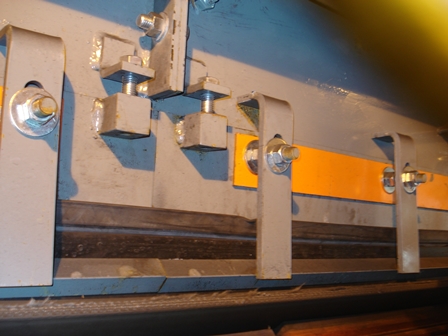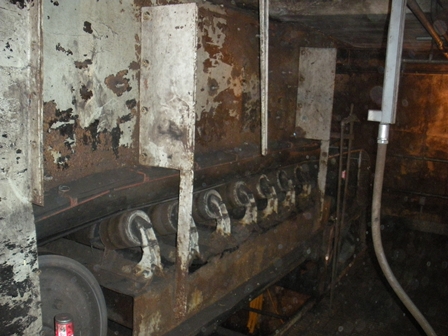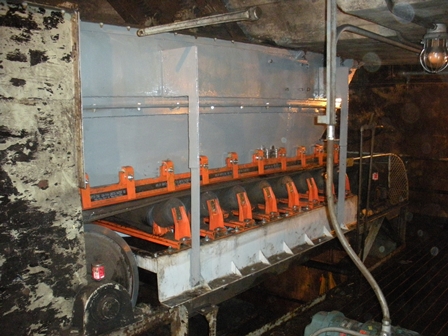Significant System Updates Completed At Northern Indiana Public Service Company
Published: June 15th 2012
 [Michigan City, IN] - One of Indiana’s largest power generators recently completed significant upgrades to its bulk material handling system, reducing fugitive material and the issues that it causes. By updating the facility’s longest conveyor, company officials have seen reduced dust and spillage, contributing to greater plant safety, productivity and environmental responsibility.
[Michigan City, IN] - One of Indiana’s largest power generators recently completed significant upgrades to its bulk material handling system, reducing fugitive material and the issues that it causes. By updating the facility’s longest conveyor, company officials have seen reduced dust and spillage, contributing to greater plant safety, productivity and environmental responsibility.
Northern Indiana Public Service Company (NIPSCO) is Indiana’s second-largest utility, with a service territory covering the upper third of the state. The company’s customer base is predominately residential -- just one percent of NIPSCO customers are industrial users, yet they consume more than 50% of the total electricity produced by the utility. Approximately 70% of that power is generated from the combustion of coal.
The Michigan City Generating Station (MCGS), located on the shore of Lake Michigan, has a single 500 MW coal-fired unit. The system burns about 5,000 tons (~4,536 metric tons) of coal per day, primarily 85% PRB with a 15% eastern blend, metered by a belt feeder onto conveyors that keep the plant’s ten bunkers stocked.
Time to Upgrade
The MCGS Maintenance and Engineering departments decided to take a proactive approach to upgrading their systems for reduced fugitive dust and spillage. To develop a roadmap for upgrades, they conducted a plant-wide combustible dust assessment and then prioritized the changes they wanted to make, seeking out the best available technologies to eliminate the most pressing problems first. Martin Engineering was selected as a primary resource for the upgrade, including retrofit wear liners on the four feeders below the rail car dump, as well as on the two feeders from the reclaim system. The wear liners are designed to remove the material burden from the dust containment system, so the bulk of the load is diverted away from the sealing components, keeping the coal away from the elastomer sealing system and extending its lifespan. Available in 3/8" or 1/2" thick Brinnel 400 or Brinnel 500 abrasion-resistant plate, the liners mount to the outside of the existing transfer point skirt board.
Martin Engineering was selected as a primary resource for the upgrade, including retrofit wear liners on the four feeders below the rail car dump, as well as on the two feeders from the reclaim system. The wear liners are designed to remove the material burden from the dust containment system, so the bulk of the load is diverted away from the sealing components, keeping the coal away from the elastomer sealing system and extending its lifespan. Available in 3/8" or 1/2" thick Brinnel 400 or Brinnel 500 abrasion-resistant plate, the liners mount to the outside of the existing transfer point skirt board.
Minimizing Downtime
Rather than scheduling a full plant outage, the installation was completed during a single-shift downtime by a crew from Martin Engineering. The 3-man team’s first task was rebuilding the load zone on the belt feeder below the railcar dump, where the skirting and liners were worn out and the support structure below the belt had deteriorated over the years.
Next, the technicians pre-fabricated additional support structure to be installed below the idlers, designed so it could be moved into place through very confined spaces. When all sections were in place or repaired, they went to work on the wear liner and skirt board.
Because it’s installed on the outside of the chutes, the EVO® External Wear Liner saved labor and eliminated the need for confined space entry, without requiring a full tear-out of the existing chutes. “All work was performed outside the chutes, so we didn’t need a lengthy downtime to install the upgrades,” commented Martin Engineering Installation Technician Tony King. Attached on unique mounting blocks outside the chute, the wear liner is readily adjustable through a specially-designed bolt-on alignment system that delivers precise control to reduce spillage. The components are designed to fit conveyors with trough angles from 0º to 35°. Standard length is 72 in. (~1.83 meters).
Attached on unique mounting blocks outside the chute, the wear liner is readily adjustable through a specially-designed bolt-on alignment system that delivers precise control to reduce spillage. The components are designed to fit conveyors with trough angles from 0º to 35°. Standard length is 72 in. (~1.83 meters).
“One of the problems with the existing skirt board was its proximity to the edge of the belt,” observed Terry Weiler, MCGS Maintenance Supervisor. “There was so little belt edge to work with that sealing became much more difficult,” he said. To address the problem, the Martin Services installation crew cut out a portion of the existing skirt board and located the new skirts 2" inboard from each side.
To further clamp down on fugitive material, technicians also sealed the belt edge using Martin Engineering’s ApronSeal™ Skirting System, which provides two wear surfaces on a single elastomer sealing strip installed along the bottom of the skirt board. When the bottom side of the strip against the belt is worn, the sealing strip is inverted, providing a second service life.
The skirt board sealing system is installed on the sides of the loading zones to contain dust, eliminate spillage and reduce cleanup. The dual-sealing system incorporates a primary seal clamped to the steel skirt board to keep lumps on the belt and a secondary or “outrigger” strip to capture any fines or dust particles that pass beneath the primary seal. The secondary seal lies gently on the belt and self-adjusts to maintain consistent strip-to-belt pressure, despite high-speed material movement and fluctuations in the belt’s line of travel.
Worn rollers were also replaced with Martin Engineering track-mounted idlers, a unique design with a sliding frame on a stationary base. The compact idler set fits in tight spaces between belt support cradles, needing only eight inches (203 mm) of width for 6-inch (152 mm) rolls, yet the slide-in frame allows easy installation and service.
In fact, with the Martin® Trac-Mount™ Idler, there is no need to raise the belt or remove adjacent idlers. “That part of the upgrade was an operator favorite, given the very tight quarters around the feeder belt,” observed Weiler. Idler assemblies can be supplied with either steel or impact rollers.
Results
MCGS upgraded the conveyor systems to significantly reduce spillage and incorporate other recommendations from the study. The enhancements have eliminated the dust and coal piles adjacent to the coal handling components, improving safety and reducing material waste.
“We are pleased with the work of the Martin Engineering crew and the performance of the retrofit wearliner system,” said Weiler. “Because it installed so easily, we could complete the upgrade without an extended outage. It refurbished our system and really helped us reduce the fugitive material.”
A short time later, MCGS ordered three more rail car dump feeders from Martin Engineering to complete further upgrades. Weiler also revealed that additional plans are in the works: “We are now looking at using the retrofit wear liner to update other conveyors in the plant,” he added.